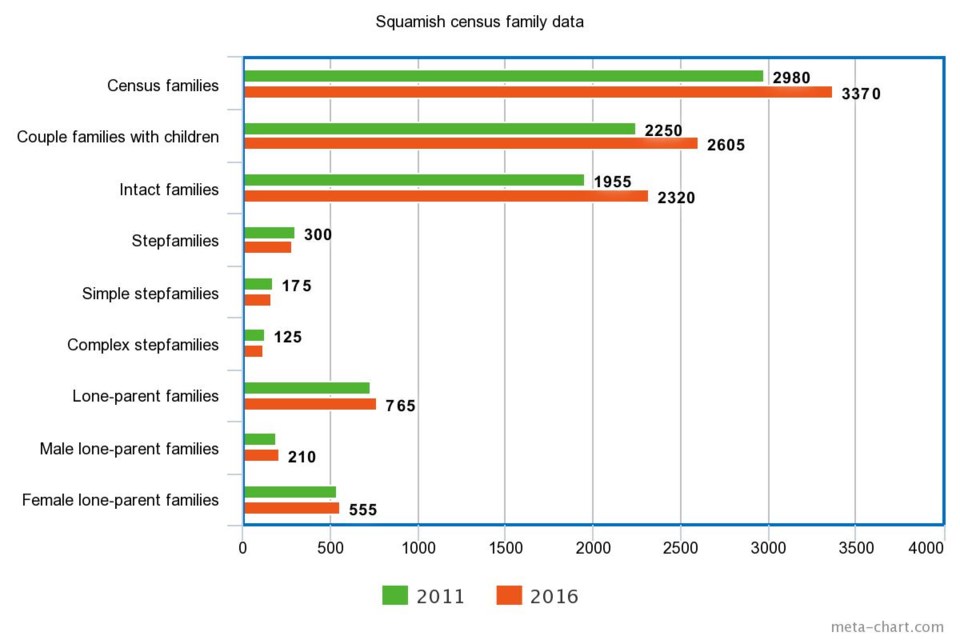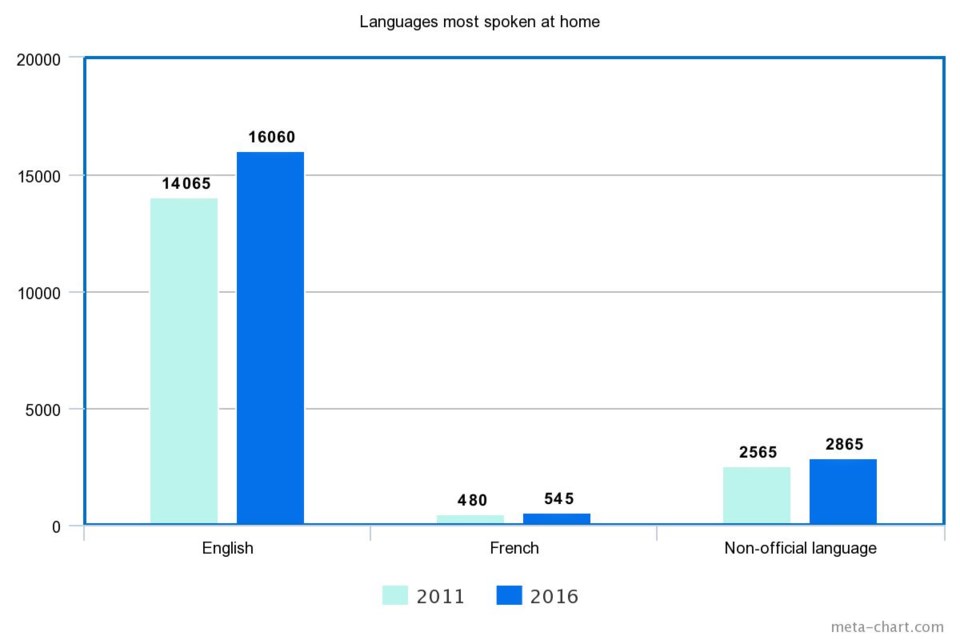The latest census data shows more families are in town, while language diversity as a percentage has remained at a standstill since 2011.
Results from the 2016 survey show that 3,370 families with children now reside in town, up from 2,980 in 2011. Families with children can be composed of a married or common-law couple or consist of a lone parent living with at least one child in the same dwelling.
It’s an expected rise, given that the Squamish area’s population has been booming, increasing to 19,893 from 17,479 in the same amount of time.
Among other findings are an increase in the amount of couple families with children – that is, families that have two parents. The census has documented that number rising to 2,605 from 2,250 during the last survey.
Intact families have risen to 2,320 from 1,955. Intact families are defined in the census as couple families in which all children are the biological or adopted children of both parents.
On the other hand, the number of stepfamilies dropped slightly to 285, down from 300. This refers to couple families where there is at least one child whose birth or adoption preceded the current relationship.
Simple stepfamilies and complex stepfamilies have stayed at relatively similar levels compared with the last census, dropping by just a few points.
Simple stepfamilies are defined by the census as cases where families only have the children of one parent from a previous union. No children are born or adopted in the current relationship in this arrangement. Complex stepfamilies include a mixture of children from previous relationships and the current one.
The number of lone-parent families has risen slightly to 765, with single-mom families, which tally in at 555, remaining more common than single-dad families at 210.

With respect to language diversity, the latest data shows 2,865 people said neither French nor English was the dominant language spoken at home, a noticeable increase from the 2,565 who ticked that box in 2011. However, on a percentage basis, non-official languages still made up about 14 per cent – the same as it was during the last census.
The number of French speakers has increased to 545 from 480. However, the biggest increase still goes to English speakers – 16,060 people said it was the main language spoken at home, up from 14,065 in 2011.




